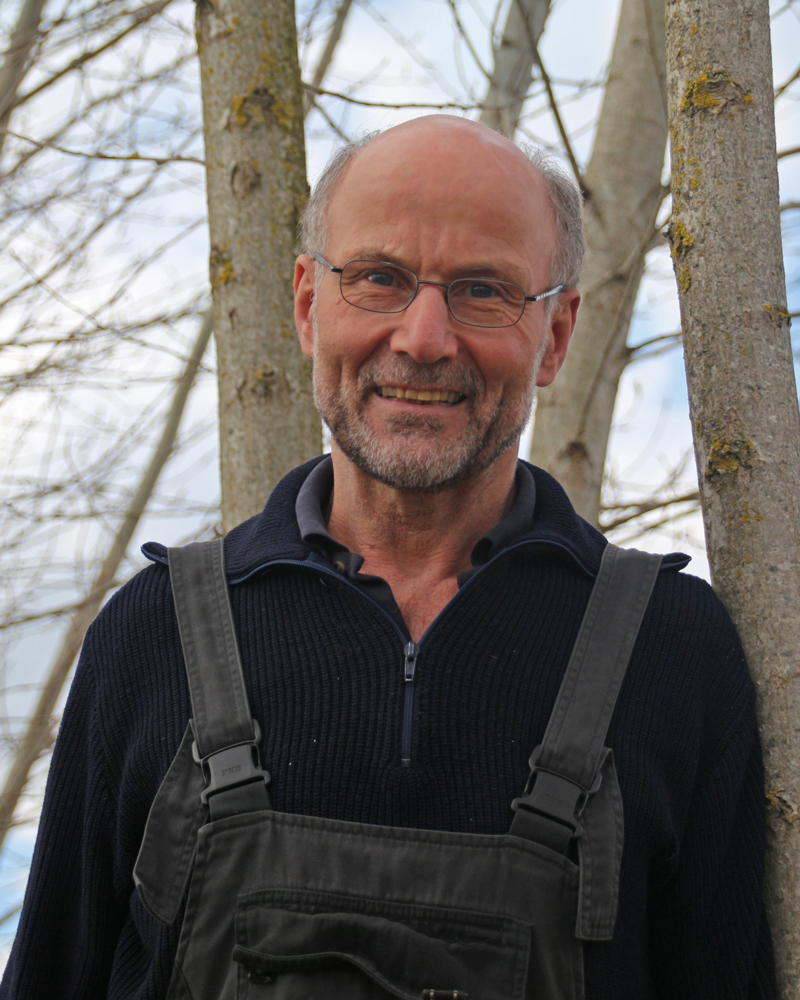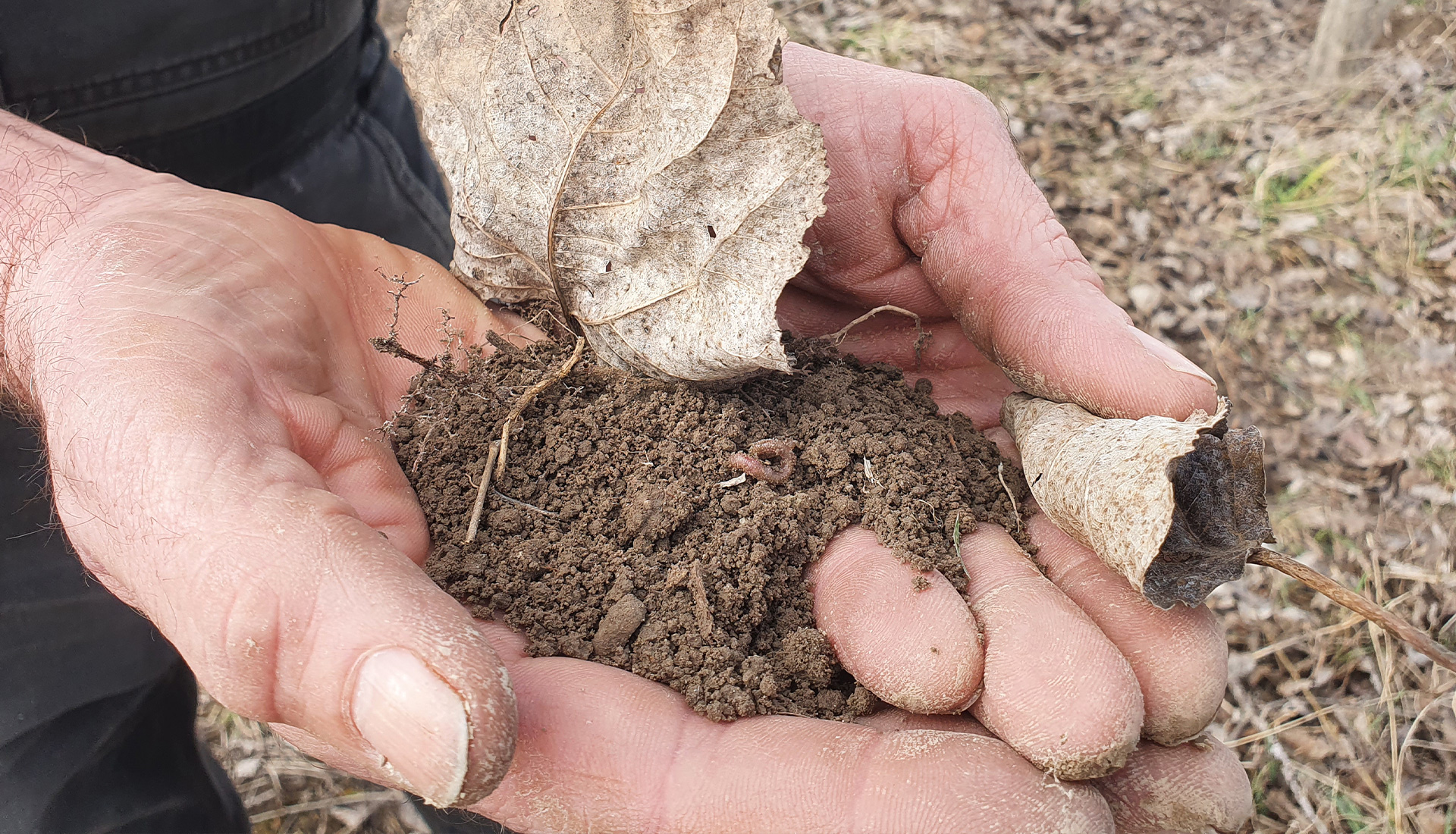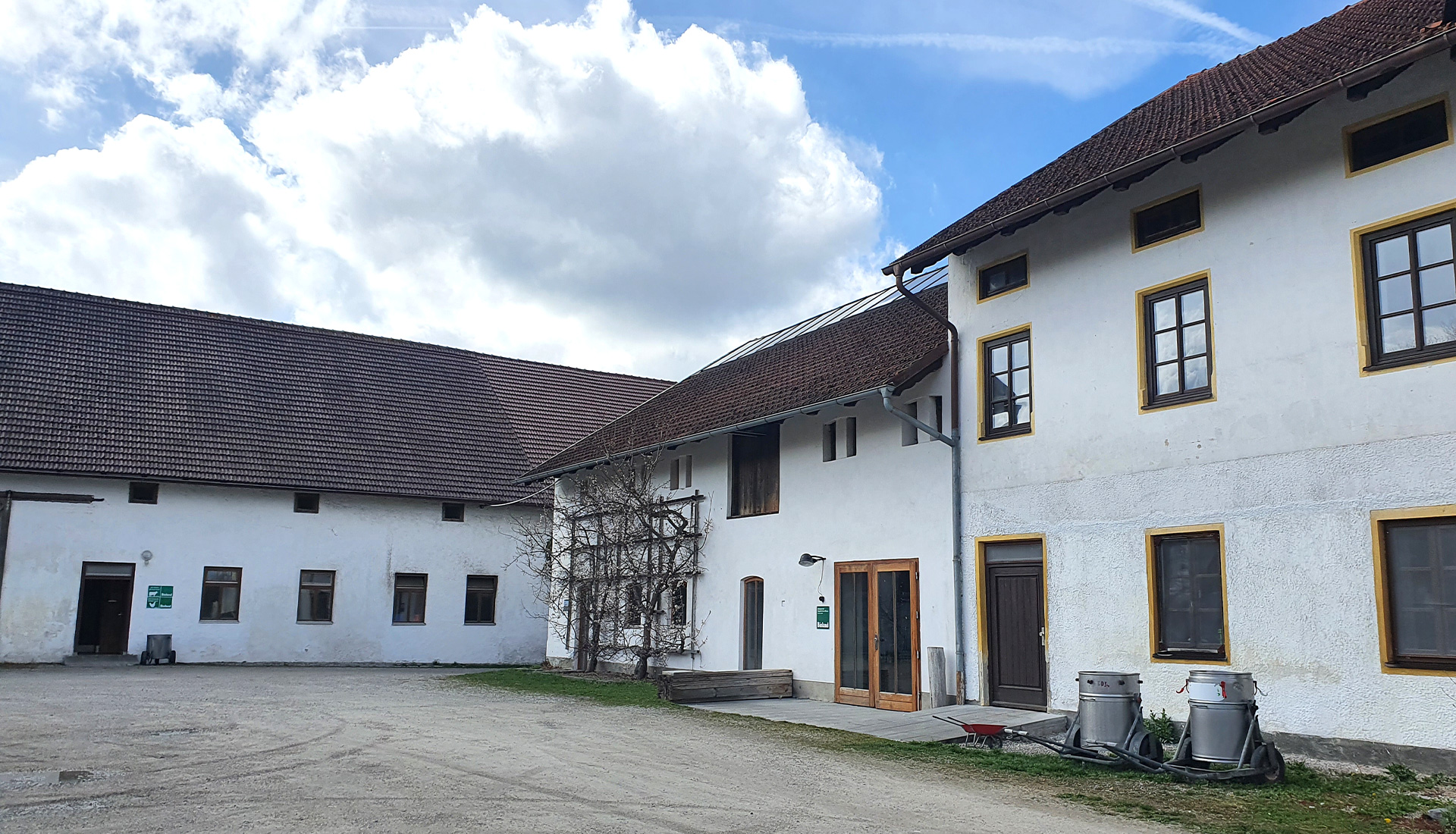“We farmers and foresters hold the key not only to stopping climate change, but to cooling down the earth’s atmosphere,” Sepp Braun states emphatically. The key that the organic farmer from Pulling in the Bavarian district of Freising describes isn’t to be found in his hand, but in his field: Trees. Although he started planting three-row poplar strips every 60-80m across his fields in 2008, Mr Braun hasn’t experienced lower yields. Wheat, oats and clover grass all produce the same average yield across a hectare including tree strips as on cultivated neighbouring land without. This was the conclusion of a research project entitled: “Development and testing of an agroforestry system combining organic agriculture and short rotation forest”.

Sepp Braun, organic farmer
But how does it work? It’s true the silvo-arable systems where woody plants like trees and shrubs are grown alongside arable crops are helpful or even necessary for agricultural production in many parts of the world. But in Germany, a country which has so far been subjected to favourable climatic conditions for agriculture, these systems struggle to gain support as they are said to reduce yields. After all, the roots of trees don’t just stop growing at the boundary to the field.
We hold the key not only to stopping climate change, but to cooling down the earth’s atmosphere
Sepp Braun
Poplar strips – a new source of fuel on the farm
A no-plough organic farmer, Mr Braun has worked in forest gardens, permaculture, and agroforestry for many years. It was the lack of experience with energy wood from agroforestry systems in organic farming in Bavaria that saw him launch the study, for which he later made his own field available and planted his second energy wood system. With the timber he produces, he produces his own energy and has since become energy self-sufficient.
The two types of hybrid balsam poplar, Max 1 and Max 3, were first planted as cuttings which kept the initial investment costs low. Mr Braun planted 30-40m long strips 60-80m apart in the middle of a 1.2ha field in a 1.25 x 1.5m formation of three double rows, positioned at right angles to the main wind direction. The 10m wide tree strips took up 13% of the arable land in the field.
But the biggest challenge in the first years was keeping vole damage and weed growth to a minimum without the use of herbicides. After that, there was not much to do until the first poplar harvest seven years down the line. Fertiliser was not necessary, as balsam poplar doesn’t react to the application of nutrients in the soil, according to trials carried out by the Bavarian State Institute of Forestry (LWF).

The balsam poplar hybrids stand in strips in the middle of a field in a group of three double rows across the prevailing wind direction.
Less wind and improved yields
Annually, researchers measured the yield of oats, winter wheat and clover grass that grew in the field next to the tree strips. Results revealed that the yield decreased in the immediate vicinity – five to 10m around the poplars. But outside of this, the additional yields recorded compensated for the loss. By calculating the average annual yield for the field, they found there was no significant difference in yield between the area with tree strips and the neighbouring field without. And the trees didn’t reduce the grain quality nor the total energy output of the clover-grass mixture to the extent that it impacted on commercial use.
Although this may mean little at first, the significance of these findings can be explained practically: The tree strips reduce wind speed and positively influence the microclimate. Directly behind the tree strips, the relative wind speed dropped to about 40% and 50m from the poplars, it was 20% lower.
What is an agroforestry system?
Agroforestry is a system that combines the use of trees and shrubs with crops or livestock, with the aim of benefiting from the positive interactions that take place between its components. Agroforestry systems are considered to offer numerous environmental advantages when compared to complete clearing methods, especially in tropical rainforests. Against the backdrop of climate change, the systems are now also gaining popularity in Europe. It is a revival of the practice more than anything else, because agroforestry systems are nothing new. In particular, silvo-pastoral systems which combine livestock farming with forestry, were traditionally very common on the European continent. Wood pastures are still often used as sites for livestock to graze. In modern European agroforestry systems, walnut or energy wood strips are often planted in arable fields to make a silvo-arable system. In contrast, fodder hedges – often hazel or willow – for cattle or small ruminants, like sheep and goats, are still relatively unknown.
The researchers suspect the reason of the uneven spatial distribution of yields is the competition for light, and protruding branches that made precise soil cultivation near the poplar strips more difficult. “Yields are lower in the areas shaded by trees, this is of course not the same for all crops. But these losses in yield are compensated for by the overall improved growth in the area,” Mr Braun explains.
The organic farmer and other project participants suspect the advantages of tree strips for increasing yield would become much clearer in other locations. Freising benefits from a favourable microclimate, with little wind, less sunlight than the south of France and good quality soils. The microclimate at the site does not over-compensate for the reduced yield around the tree strips. But the more favourable the microclimate is, the lower the gains from agroforestry. “We have shown that tree strips do not reduce yields at such sites and that is a good result,” Mr Braun finds.

How the trees and shrubs affect arable crops depends, among other things, on the tree species, the planting density, the age of the trees and the arable crop.
Trees can help increase yields
A study from Brandenburg supports the assumption that agroforestry systems are particularly useful in places with less favourable microclimates. On large areas with light, sandy soils at risk of wind erosion, the addition of energy wood strips increased sugar beet yields. Agroforestry systems also seem to favour higher yields in dry years. For example, the authors of a northern German study measured higher winter wheat yields in a trial agroforestry system than in a treeless control site in the dry year of 2012. They suspected the more favourable weather conditions created in the agroforestry system were a possible cause of the difference in yields at the two sites. However, the exact effect on arable crop yields varies according to tree species, planting density, age of the trees and crop type, among other factors.
According to a Belgian study, strips of two- to seven-year-old poplars had little effect on the yield of forage maize, potatoes, winter wheat and winter barley. Around the 15- to 48-year-old deciduous trees, however, the researchers observed yield losses, especially in the cases of maize and potatoes.
Successfully growing poplar without using herbicides
Anyone who wants to plant energy wood strips in organic farming faces one challenge: Keeping weed growth to a minimum without the use of herbicides, only this way can the poplars really take off in the first few years. In the Bavarian trial, several different weed regulation possibilities were tested: The application of a self-degradable mulch film based on maize starch as well as camelina, white clover, winter rye or yellow clover as nurse crops. With all variants and even without weed control, the poplars grew successfully, so the use of camelina, winter rye and white clover as nurse crops is recommended.
Greater independence from fluctuating raw material prices
As a result of rising energy prices, Mr Braun has found producing his own wood and energy is a worthwhile venture. He also expects agriculture to be included in carbon trading. If so, tree strips, which remove and store CO2 from the atmosphere, would generate additional income.
However, under no circumstances should farmers plant energy wood with the intention of getting a super price for the chips in seven years’ times, warns Dr Frank Burger from the LWF. Raw material prices, including wood chips, fluctuate too extremely for that to happen. So, it is important to integrate the use of wood into the business, for example as wood chips or wood fuel. “That way, I am not reliant on the price of crude oil. If suddenly the price of heating oil drops to 20c/litre (17p/litre), selling the wood is no longer worthwhile, but I just must put up with it,” says Dr Burger.

Frank Burger
The Agroforestry system can produce energy for me free of charge.
Dr. Frank Burger
The decision to plant your own energy wood strips needs to be carefully considered. Once the trees have been planted, they should be left to mature and should not be cleared prematurely, otherwise it isn’t worthwhile planting them in the first place. Only after several crop rotations do the costs of planting and clearing the energy wood strips pay off. “If, after eight years, I think about uprooting the system again, I would be throwing money down the drain. As soon as I have repaid the costs of the initial investment, the system produces energy for me free of charge,” explains Dr Burger.
Other benefits of poplar
In any case, energy wood strips will probably not become the new cash cow on the farm. But with lower initial investment costs, they require little maintenance once in the ground. They do not necessarily negatively affect crop yields and can increase them under certain circumstances. The wood also helps to reduce operating costs on the farm. Charcoal, produced during gasification, can be used to improve soil health, another advantage. In addition, the poplar strips enrich biodiversity which makes the farm more resilient.

Trees leave good soil. The leaves, roots and earthworms under the poplars make for a good humus.
Even earthworms feel at home under the poplars. In the poplar strip, Mr Braun’s dog only has to dig a little before the earthworms can be seen wriggling about on the surface of the soil. “The earthworm biomass is much higher under the poplar than under a beech tree,” explains Dr Burger, who has tagged along to see the field with the farmer. Mr Braun is already dreaming of the soil quality the poplars will leave behind after their 40-year spell in the ground. “You can’t quite believe the quality of humus the leaves and roots add to the soil,” he says. He is convinced the agriculture sector will simply not be able to do without agroforestry systems in the long run. And challenges like climate protection, water conservation, species protection, soil conservation and drinking water protection make them a necessity.

Braun Farm Data
- 6ha forest, 58ha agricultural land, comprising 17ha grassland and 41ha arable land
- Dairy cattle with milk processing facility (22-25 cows including offspring), 400 chickens, six pigs to recycle food waste
- Location: In the northern Munich gravel plain in the Tertiary Hills to the south of the Danube
- Soil type: A blend of pararendzina and limey gley
- Soil character: Can vary greatly from alluvial and gravel soils through to clayey and loamy soils
- Experimental area: Silty loam, pH: 7.4, total organic carbon content: 4.0%
- NS 820 mm/year
- Crops: Oats, winter wheat, clover grass, summer cereals, spelt, rye and potatoes

Considering planting your own tree strips? Here are three top tips from Dr Frank Burger:
- Contact your Department of Agriculture early on to clarify any possible legal issues. In Bavaria, for example, he would refer to energy wood strips as a short-rotation coppice (SRC) and not agroforestry because the term agroforestry is not mentioned in the Bavarian Forest Act. By speaking to his respective agricultural office before planting and officially receiving permission to do so, he can be certain he will be allowed to clear the poplars at a later stage.
- It is crucial to integrate your agroforestry system into your farm to help counteract the wild fluctuations in agricultural prices (e.g., introducing wood chip heating for the farm).
- Think carefully about which system you choose. The decision between agroforestry or short-rotation coppices is hugely important because it will be with you until you hand over the farm.
